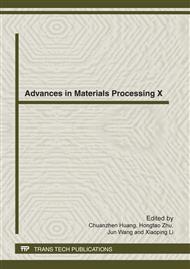[1]
K. Sorby, Inverse kinematics of five-axis machines near singular configurations, International Journal of Machine Tools and Manufacture, 47 (2007) 299-306.
DOI: 10.1016/j.ijmachtools.2006.03.011
Google Scholar
[2]
M. -C. Ho, Y. -R. Hwang, C. -H. Hu, Five-axis tool orientation smoothing using quaternion interpolation algorithm, International Journal of Machine Tools and Manufacture, 43 (2003) 1259-1267.
DOI: 10.1016/s0890-6955(03)00107-x
Google Scholar
[3]
N. Wang, K. Tang, Automatic generation of gouge-free and angular-velocity-compliant five-axis toolpath, Computer-Aided Design, 39 (2007) 841-852.
DOI: 10.1016/j.cad.2007.04.003
Google Scholar
[4]
Q. -Z. Bi, Y. -H. Wang, H. Ding, A GPU-based algorithm for generating collision-free and orientation-smooth five-axis finishing tool paths of a ball-end cutter, International Journal of Production Research, 48 (2010) 1105-1124.
DOI: 10.1080/00207540802570685
Google Scholar
[5]
C. Castagnetti, E. Duc, P. Ray, The Domain of Admissible Orientation concept: A new method for five-axis tool path optimisation, Computer-Aided Design, 40 (2008) 938-950.
DOI: 10.1016/j.cad.2008.07.002
Google Scholar
[6]
L.L. Li, Y.F. Zhang, Cutter selection for 5-axis milling of sculptured surfaces based on accessibility analysis, International Journal of Production Research, 44 (2006) 3303 - 3323.
DOI: 10.1080/00207540500444720
Google Scholar
[7]
L.L. Li, Y.F. Zhang, An integrated approach towards process planning for 5-axis milling of sculptured surfaces based on cutter accessibility, Computer-aided Design and applications, 3 (2006) 249-258.
DOI: 10.1080/16864360.2006.10738462
Google Scholar


